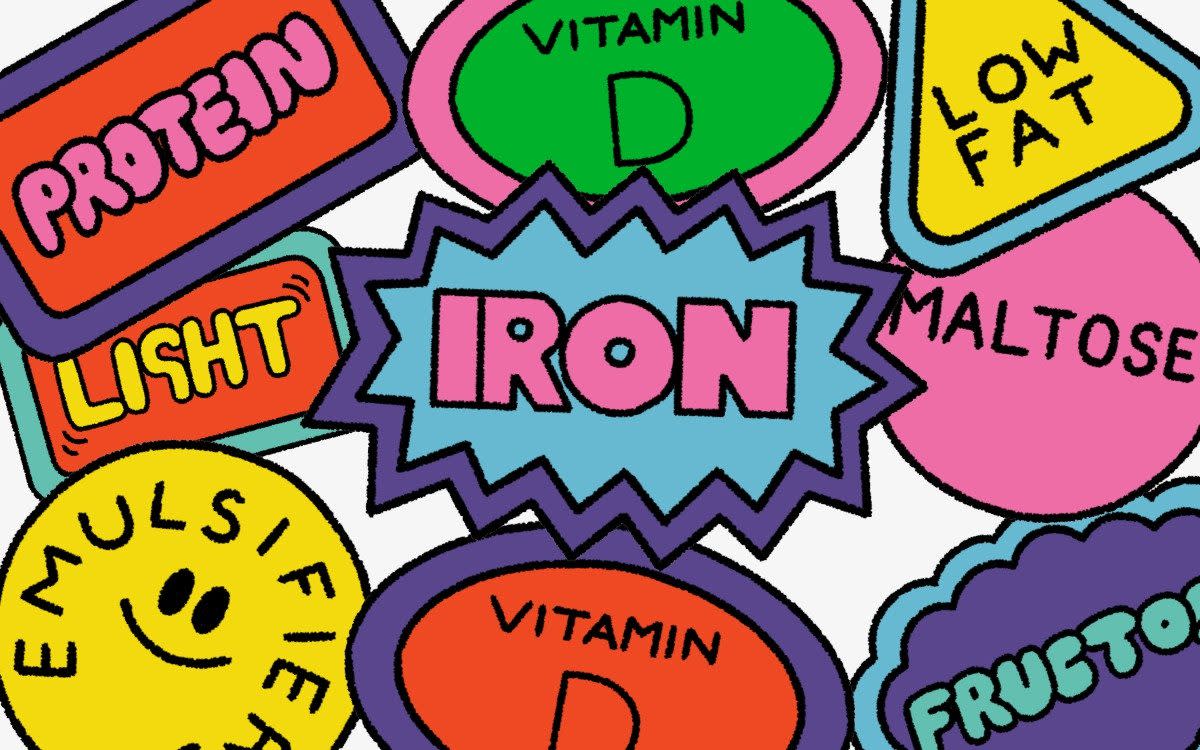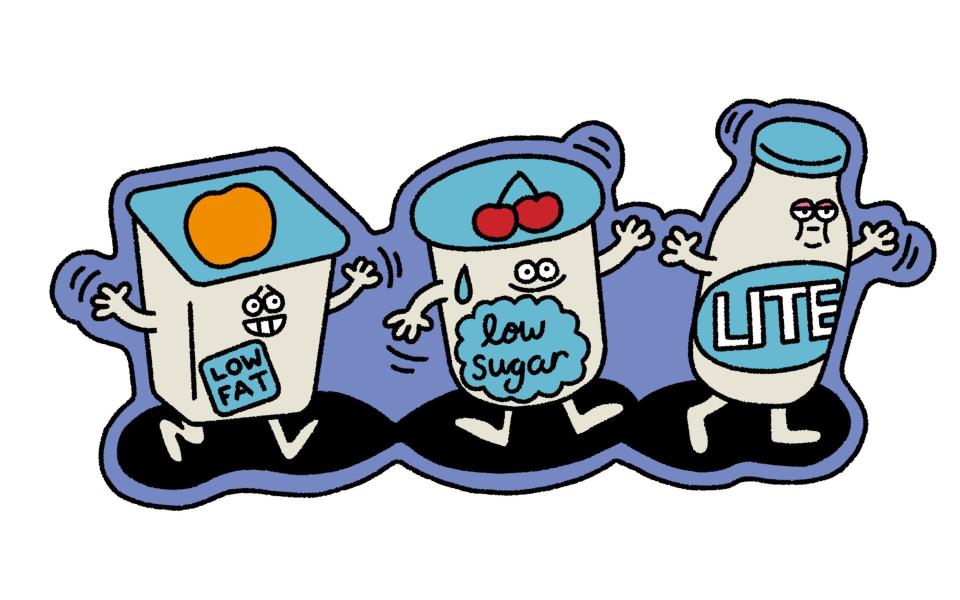How to identify ultra-processed foods – and the surprising ones hiding in your cupboard


It’s now impossible to avoid warnings about the dangers of eating too much ultra-processed food (UPF), the industrially manufactured products that fill supermarket shelves and media headlines.
One recent study suggested they may contribute to 32 different health problems including a higher risk of heart disease, cancer, Type 2 diabetes and early death. The latest research even links UPFs to an increased risk of the eye disease glaucoma.
This ever-mounting body of research is redefining what healthy eating means. Instead of calories and nutrients being the focus, attention is shifting to processing, and the extent to which food has been altered from its original state. Avoiding UPFs is now a key part of the healthy eating equation.
“Our bodies have been designed to eat food, not ultra-processed formulations made by big industry,” says Dr Yanaina Chavez-Ugalde, an expert in UPFs at the University of Cambridge. “It’s a much bigger problem than we previously thought.”
But to avoid UPFs, we need to spot them in the first place, which isn’t always easy. Ultimately, scrutinising the label is the only way to be sure, but there are UPF red flags to keep an eye out for.
A long ingredients list that’s hard to understand

The term UPF comes from the Nova classification system developed by researchers at the University of São Paulo in Brazil. They say UPFs “typically” contain five or more ingredients.
Rob Hobson, a registered nutritionist and the author of Unprocess Your Life, points out that some newer food products, such as healthy ready meals, aren’t ultra-processed despite containing lots of ingredients. “They might have lots of vegetables or spices, so it’s not just about the number but the type of ingredients,” Hobson says.
Dr Chavez-Ugalde agrees. “A long list of ingredients that’s hard to understand is a better red flag. Or think about whether your grandma or great-grandma would recognise all the ingredients. If not, it’s probably ultra-processed.”
Thickeners, stabilisers, emulsifiers and additives

UPFs often include a hefty dose of substances that manufacturers add to enhance appearance, “mouthfeel” and shelf life of food products.
Emulsifiers, for example, make products creamier and stop ingredients separating. But there’s mounting evidence they’re damaging our health. “You have to chew less so you end up eating more, and emulsifiers also disrupt our gut microbiome and the lining of our digestive tract,” Dr Chavez-Ugalde says. “There’s emerging evidence that emulsifiers and mental health problems may be linked.”
On the ingredients list, look out for the term emulsifiers or individual types including lecithin (E322), carrageenan (E407), polysorbate 80 (E433), carboxymethyl cellulose (E466), mono- and diglycerides of fatty acids (E471) and sodium stearoyl lactylate (E481).
Other red flag terms include flavours, flavour enhancers, colours, sweeteners, thickeners, and anti-foaming, bulking, carbonating, foaming, gelling and glazing agents.
“They’re often added because many manufacturers make foods as cheaply as they can and these additives are cheap,” Hobson says. “White bread for example can contain as many as 30 of these types of ingredients in order to hold the product together and make it very soft.”
Added sugars and sweeteners

Check the label for words ending in ‘ose’ – fructose, glucose, maltose, dextrose and so on – as these are other names for types of sugar used in industrial processing. You’ll find them in savoury as well as sweet foods, including ready meals, bread, sauces and condiments
If a product contains artificial sweeteners, it is, by definition, a UPF. They taste sweet like sugar but contain fewer or no calories and are similarly everywhere from flavoured milk and ice cream to energy bars and sauces. Common sweeteners include acesulfame K (E950), aspartame (E951), erythritol (E968), saccharin (E954), sorbitol (E420), steviol glycosides (E960), sucralose (E955), xylitol (E967).
“What you’ll often find is that some artificial sweeteners leave a bitter aftertaste, so they use different sweeteners to get the flavour right,” Robson explains. Sweeteners are also used to mask the unpalatable flavour of additives like preservatives.
Health claims

Does the packaging promote the health benefits of what’s inside? Is the manufacturer trumpeting the added vitamins and minerals, extra protein or fibre? If so, the product is UPF.
“A food has either been fortified in order to be able to make a health claim for marketing reasons, or the manufacturer has added it back in because it’s been destroyed in the manufacturing process,” Hobson says.
Protein is a good example. It’s now being added to a range of foods – from breakfast cereals to chocolate bars – to give the products a “health halo”. In other words, manufacturers want to make us think a food is healthier than it is, or better for us than rival brands.
Unprocessed foods like broccoli and mushrooms, or processed ones like tinned tomatoes and pasta, don’t carry health claims. They don’t need to.
Instant, flavoured foods

Foods that are almost ready to eat, like instant noodles, instant soup and instant porridge are typically UPF.
“If you see ‘instant’ on the packet that’s a good time to pick that product up and have a good look at it, because it’s a red flag that it’s ultra-processed,” Robson advises. “These products have usually been mechanically altered in a way that makes them quicker to cook, and they often also contain artificial flavourings.”
If it’s convenient to consume products like instant porridge, for example, reach for an unflavoured and unsweetened version and add fruit, honey or sugar yourself.
Low fat, low sugar or ‘lite’

Manufacturers often add the terms “low-fat”, “sugar-free” or “lite” to products to make them seem a good choice for people trying to manage their weight. But by reducing the fat or sugar content, they’ve had to add other substances to make the product palatable. Most contain sweeteners, so they’re UPF.
“What exactly artificial sweeteners do to our health isn’t clear, but it doesn’t look good,” notes the UPF expert Dr Chris Van Tulleken in his book Ultra-processed People. He says research suggests that consuming artificial sweeteners as well as sugar, as most people do, “produces harmful effects on metabolic health”.
Sweeteners may also increase our cravings for sweet food and disrupt our gut microbiome, he says.
Comes in fancy packaging or you can’t see the ingredients

It might seem simple, but food packaging offers clues about whether it’s UPF. “If it comes in fancy packaging with health claims or environmental claims, and with lots of strong colours, that’s an indicator it’s UPF,” says Dr Chavez-Ugalde. “The manufacturer is trying hard to sell it to you.”
If a product comes in a slightly puffed up foil-like bag it’s likely that nitrogen has been pumped in during the packaging process to remove the oxygen.
“Potato crisps , pretzels, popcorn, and other similar snacks are often packaged with nitrogen to prevent oxidation and maintain crispiness,” Dr Chavez-Ugalde explains. Breads, pastries, cakes and some breakfast cereals like granola are also packaged with nitrogen to keep them fresh for longer.
Could you make it in your kitchen?

It’s probably the most straightforward test of all: check the ingredients list and if it contains at least one item you don’t recognise as something found in standard kitchens, it’s more than likely UPF.
These unrecognisable substances often appear at the beginning or the middle of the ingredients list. “If it looks like you couldn’t make it at home with the ingredients in your cupboard, then it’s probably UPF,” Robson says.
Seven surprising UPFs
Foods like shop bought cakes, biscuits, confectionary and sweetened fizzy drinks are clearly UPFs but those below aren’t as obvious.
Boxed breakfast cereals
The packaging will tout them as healthy because they’re fortified with added nutrients but almost all are UPF.
Protein/energy bars
They’re promoted as healthy snacks, often with the allure of extra protein, but are often full of sugar/sweeteners and processed fibre.
Plant-based milks
Most – but not all – non-dairy ‘mylks’ are ultra-processed and contain emulsifiers, vegetable gums and flavours.
Bread
Sliced supermarket loaves wrapped in plastic often contain an array of additives including emulsifiers, modified starches and vegetable gums.
Flavoured yogurt
These products often contain thickeners, artificial sweeteners and/or added sugars such as fruit juice concentrate or puree.
Bottled sauces and condiments
These typically contain substances like thickeners, flavour enhancers and colours, as well as hidden sugars.
Butter substitutes
Most margarines and non-dairy spreads contain emulsifiers and colours.
Recommended
Ultra-processed foods are harming our health – here's what to eat instead

 Yahoo News
Yahoo News 
